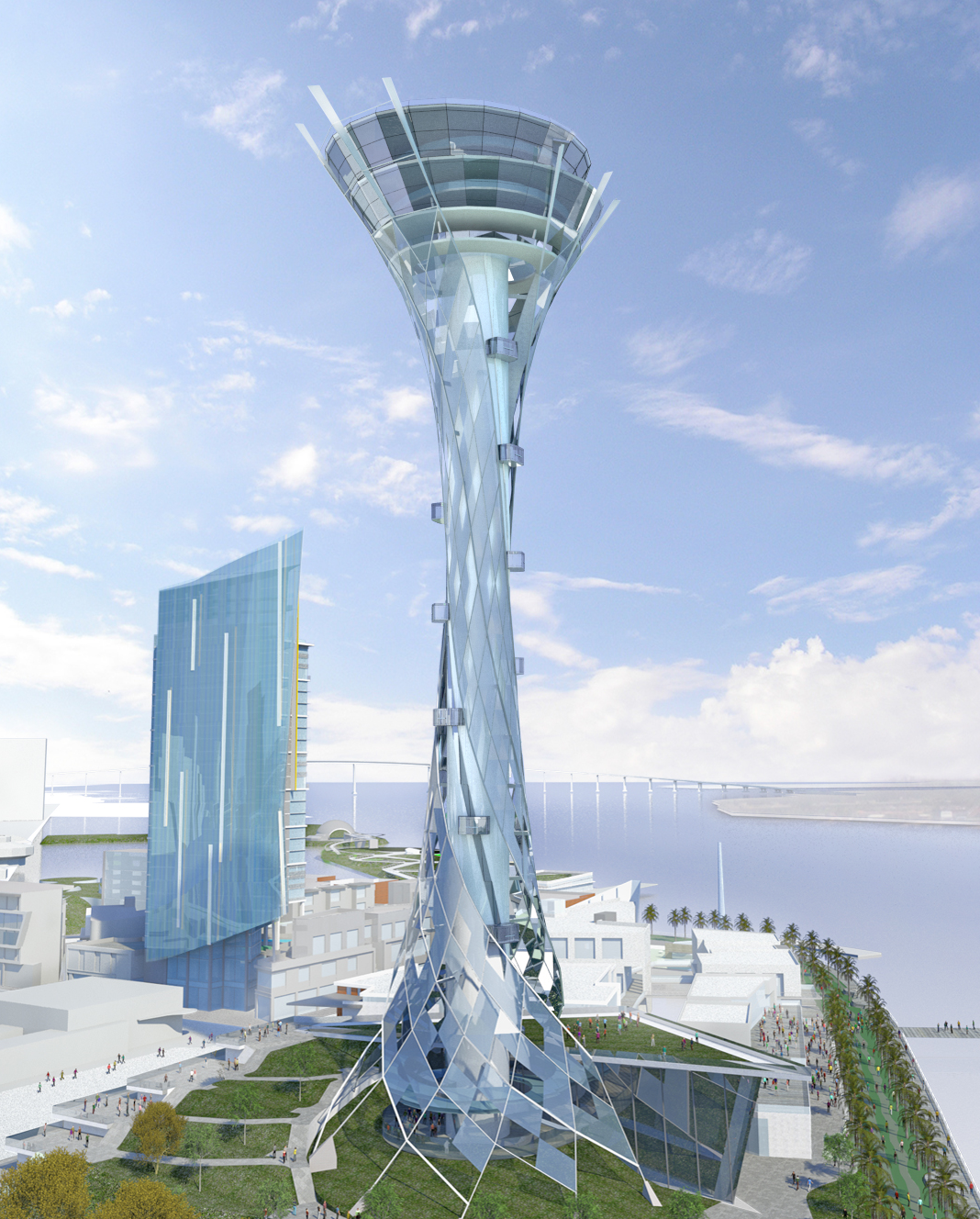Conceptual design work continues on the Port of San Diego’s planned $1.5-billion waterfront development, as the project team ensures resiliency to future sea-level rise and inspects a newly discovered earthquake fault.
The “Seaport San Diego” project will revamp an underused area cluttered with parking lots, old tourist attractions and a fish-processing facility into a mixed-use development that includes a school, aquarium and 500-ft observation tower. Thirty of the site’s 70 acres are bay water. The site, which includes the current 14-acre Seaport Village, sits on port land with a 66-year lease.
Plans include a two-level parking garage built 20 to 30 ft underground, says Yehudi Gaffen, who leads the development team. “Because we’re so close to the water, it’s all under the water table. We’re essentially creating a big bathtub under the ground.” The parking garage’s design will include a resiliency plan for sea level rise, affecting everything from the entrance’s location to placement of electrical systems.
Operating as 1HWY1, the development team includes the newly formed Protea Waterfront Development, with marina adviser RCI Group and attraction concepts by ThrillCorp and OdySea. Gaffen’s Gafcon construction management firm is the program manager for Seaport San Diego. The team plans to break ground on the project in 2021 with a three- to four-year buildout.
The team is also conducting site due diligence and geotechnical analysis, ending in spring 2018, Gaffen says. An earthquake fault was recently discovered, running from the bay into the city’s downtown.
“We’re still working through the implications,” he says. “It depends on the age of the fault.” A fault that has moved within the last 11,000 years is considered “active”—it can’t be built over and buildings must be set back a certain distance. The team plans to carbon-date the fault over the next month or two, a challenge for a waterfront site where simple trenching is not an option.
The challenge facing designers and builders of “The Spire”—the development’s 500-ft tower—isn’t structural or geotechnical, but technological, Gaffen says. The Spire will feature “gondolas” circling the core of the tower, using virtual reality to take visitors 1,000 years back in time to when indigenous tribes occupied the area. A flexible technology platform is required to accommodate future advances.
“The virtual reality field is evolving so rapidly,” Gaffen says. “Eight years from now, when this project is ready to go, we have to be ready.”
